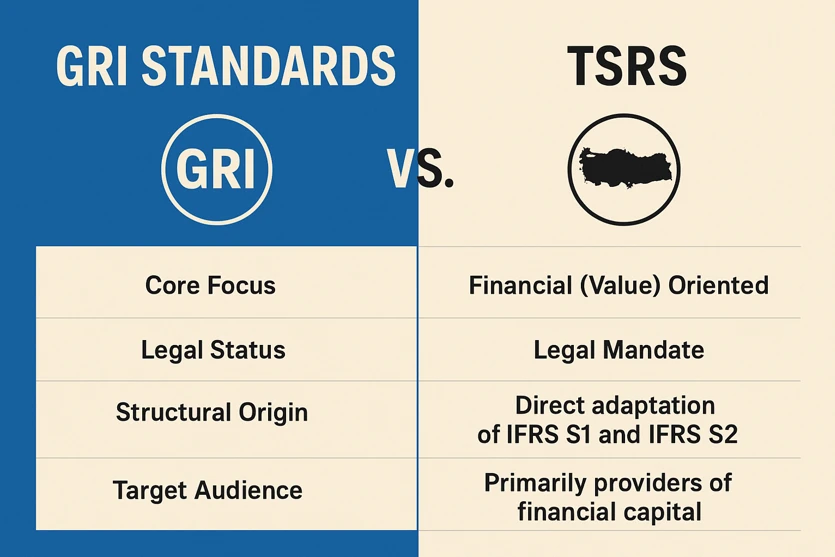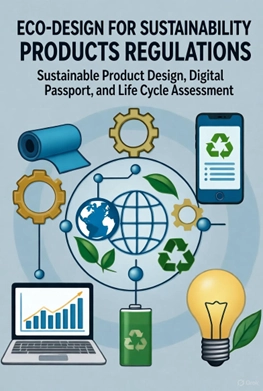What are Product Category Rules (PCR) and Why are They Important?
In today’s competitive and environmentally conscious market, manufacturers face increasing pressure to transparently disclose the environmental performance of their products. One of the most powerful tools to meet this need is the Environmental Product Declaration (EPD). These “environmental passports,” which summarize a product’s environmental footprint throughout its entire life cycle, have become a key reference in a wide range of applications, from green building certifications to public procurement. However, the credibility and significance of an EPD depend on another critical document that forms its foundation: the Product Category Rules (PCR).
So, what is a PCR, which can be described as the “user manual” for EPDs, and why is it so important?
To understand the role of PCR, it is first necessary to briefly recall what an EPD is. An EPD is a third-party verified report, prepared according to the ISO 14025 standard, that analyzes a product’s environmental impacts (carbon footprint, water consumption, acidification potential, etc.) from raw material extraction to production, use, and end-of-life, using a scientific method called Life Cycle Assessment (LCA).
What are Product Category Rules (PCR)?
Product Category Rules (PCR) are documents that define the rules, requirements, and methodologies that must be followed when preparing an EPD for a specific product category (e.g., cement, ceramics, insulation materials, windows).
If an EPD is a “report card” showing a product’s environmental performance, the PCR is the “examination regulation” that determines how that report card is to be filled out, which tests will be conducted, and the criteria for scoring. Its purpose is to ensure that EPDs prepared for different products in the same category are consistent, comparable, and transparent.
A typical PCR document defines the following elements:
- Product Category Definition: Clarifies which products are covered by the PCR.
- Functional or Declared Unit: Forms the basis for comparison. For example, standard units are defined, such as “the production of 1 ton of cement” or “the use of 1 m² of wall covering for 1 year.” This prevents the comparison of products with different types and specifications.
- System Boundaries: Clearly outlines which life cycle stages (cradle-to-gate, cradle-to-grave, etc.) the analysis will include.
- Calculation Rules and Data Requirements: Specifies which data to use during LCA studies, what the cut-off criteria will be, and how the impact assessment methodology will be applied.
- Environmental Indicators to be Reported: Lists the mandatory environmental impact categories to be reported, such as Global Warming Potential (GWP) and Ozone Depletion Potential (ODP).
- EPD Content and Format Requirements: Defines what information the final EPD document must present and in what format.
The Role of PCR in the EPD Process
EPDs prepared without a PCR would be incomparable, as they would be shaped by the individual assumptions of different manufacturers. The importance of PCR can be summarized under these four main headings:
- Comparability: This is the most fundamental benefit of PCR. When an architect or a procurement specialist wants to compare the EPDs of Manufacturer A’s ceramic tile with Manufacturer B’s ceramic tile, they must be certain that both EPDs were prepared according to the same PCR. Only then can a fair and meaningful comparison be made. Otherwise, one manufacturer might only include the production phase in their analysis, while another might also add the recycling potential, leading to misleading results.
- Credibility & Consistency: PCRs are developed by program operators (such as EPD Turkey, IBU, The International EPD® System) through a transparent process involving industry experts, academics, and stakeholders. This demonstrates that the rules underlying the EPD are based on a scientific and industry-wide consensus, thereby increasing the EPD’s credibility.
- Transparency: PCR documents are publicly available. This allows anyone to review the rules and assumptions upon which an EPD was based. This helps to prevent misleading environmental claims known as “greenwashing.”
- Market Acceptance & Standardization: Green building certification systems like LEED and BREEAM, as well as sustainable public procurement policies, often require EPDs prepared in accordance with a recognized PCR. This makes PCR a market necessity and promotes the standardization of environmental declarations across the industry.
Conclusion
In conclusion, PCRs are the fundamental directives that ensure EPDs are not just marketing documents, but robust, scientific, and comparable data sources. Any stakeholder seeking to understand a product’s environmental impact should ask, “According to which PCR was this EPD prepared?” when reviewing the document. This is because the value and meaning of an EPD are only as strong as the rules it is based on. On the path to building a sustainable future, Product Category Rules, which ensure transparency and consistency, are the unseen but most solid cornerstones of this structure.






